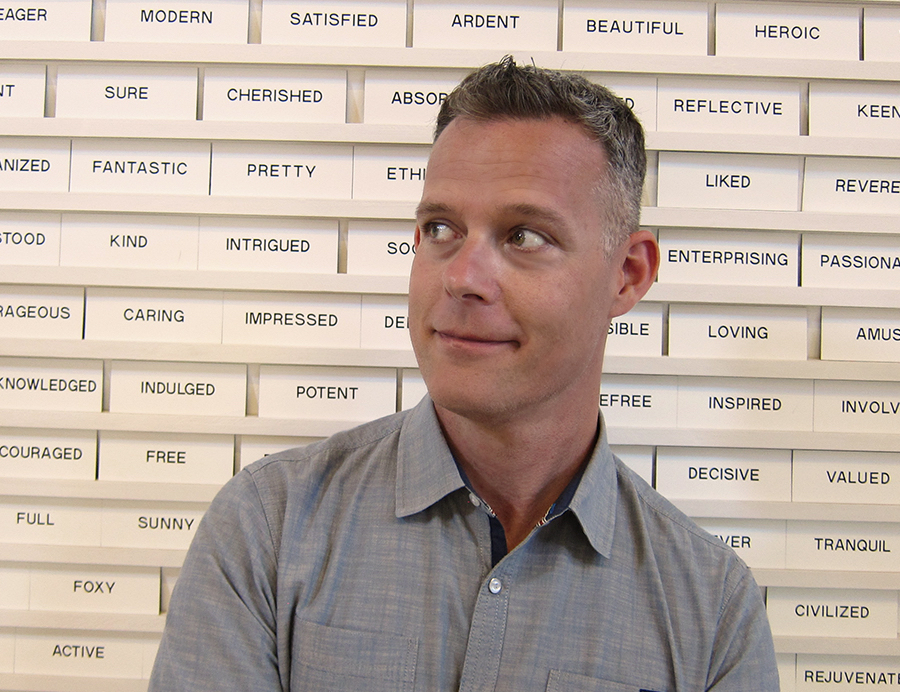How Client-Side Experience Informs Agency-Side Strategy: Interview with Emotive Brand Creative Director
How Client-Side Experience Informs Agency-Side Strategy: Interview with Emotive Brand Creative Director

Interview with Skott Bennett, Creative Director
As Creative Director of Emotive Brand, Skott puts his client-side experience to work. An expert at creating meaningful solutions that meet the unique needs of both our customers and clients, Skott offers thoughts on how his years inside companies much like many of our clients inform his work agency-side today.
What drew you to agency work?
I always tried to bring an agency approach to my client-side experiences. And where I found this approach really worked was with brand-related projects. Identifying and defining the true purpose behind an organization, and then developing and implementing those solutions across the organization – that’s where I was most fulfilled. And I’m thrilled that it’s now my focus – helping brands better articulate what makes them special and unique.
How do you think working on in-house creative teams prepared you for your current role?
Working on the inside of technology brands – like many of Emotive Brand’s clients – made me fully aware of the challenges these kind of organizations face. These companies are founded and fueled by smart, determined people who come from high-performance engineering cultures. They have incredible vision, but oftentimes something breaks down when they try to present that vision to the outside world.
Articulating a brand’s purpose isn’t easy. You spend years building complex technology that solves tough problems and then you take it to market by making it simple? I have nothing but empathy for founders or leaders who get stuck on that. It’s a contradiction, but ultimately “look how hard this was to do!” isn’t the story that’s going to delight a customer or grow a business.
That’s why there’s so much value in ensuring that key stakeholders – those people who labored over their solutions and products – play a part in the creative/idea process. Even at the early stages, it’s critical. It has to be a team effort.
Having experienced the frustrations inside many companies today first-hand, what do you think some agencies are missing about what their clients really need?
The best agencies don’t just help you come up with a brand strategy or throw a visual identity at you. They actually educate you and help you sell that strategy inside the brand – from top to bottom. Most agencies will get hyper-focused and worried about selling to the person who’s always at the table. But there’s a lot more people who need to get on board for the roll-out to be successful. The agencies who stand out to me are the ones that have helped craft the plan and sell the plan throughout the entire organization.
Working client-side, you also realize how hard internal change really is. You can’t throw people into a new planet without a spacesuit. You have to bring them on the journey. And that’s where the value of having an outside perspective really kicks in.
Can you speak more to the value of bringing an outside perspective in?
What happens a lot inside a company is that people figure out how to get things done inside the building. “I know how to get Sales to agree to X. I know how to get Product to sign off on Y.” Just focused on the inside, it’s easy to lose sight of the most important people: your customers. The audience isn’t just your department head or your CEO, but it’s easy to get stuck in an echo chamber where those people become the only people who matter. And outside perspectives – the really good ones that are based on sound strategy – can smash these type of echo chambers.
Does your in-house experience allow you to build more trust with clients?
The best thing about in-house creative teams – something that even the best agencies can forget – is that no one is going to know the brand as well as them. That’s why you have to make them part of the process. When an in-house team feels like they’re being dictated to and not partnered with, trust is impossible. And no one’s happy.
Respect is key. In-house creative teams must be brought to the table. Maybe they’ve already tried to solve the problem the agency is trying to solve. Maybe no one thought to ask them and they’re sitting on a great idea. Ignoring them is a big mistake. Their talent, insights, and knowledge are integral to getting to the best solution possible.
We talk a lot these days about agile strategy. What’s the importance of agility for clients today?
Tech companies move fast. We all know that. And in-house creative teams move even faster. It’s a go, go, go mentality. Creative brief? Please. Like that ever happens. You have to go straight from idea to execution in most cases. Working on the agency side, you get the chance to take a deeper dive and really explore solutions and methods. But you also have to be agile. Companies are trusting your ability to both deep dive and also to stay quick-footed, flex, and move in pace with their business. As a result, I make it my operating principal to combine the deeper dive into strategy and research with the insane speed of a high-performing in-house team. That’s what clients today need.
Emotive Brand is a San Francisco strategy and design agency.







